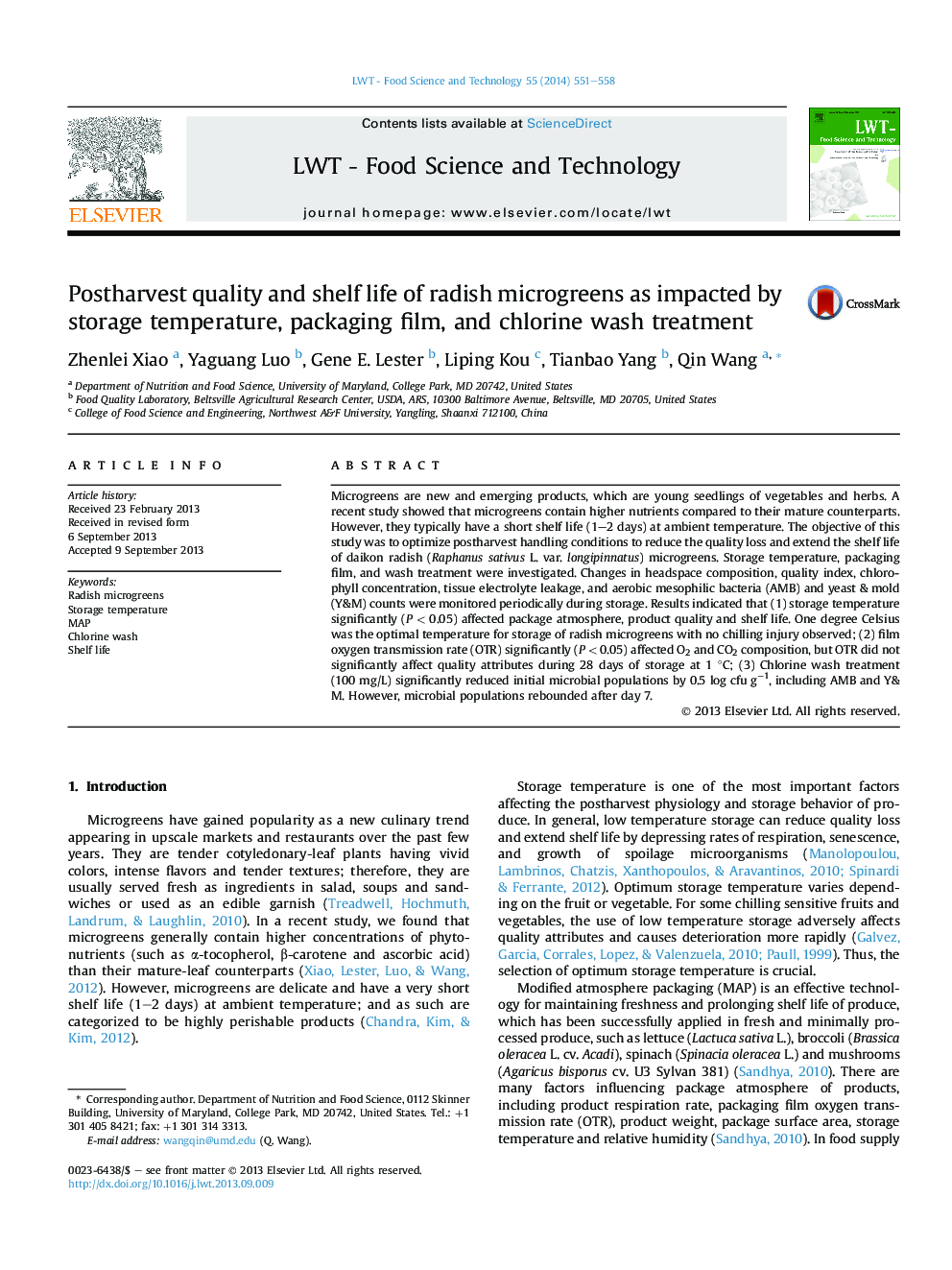| Article ID | Journal | Published Year | Pages | File Type |
|---|---|---|---|---|
| 6404512 | LWT - Food Science and Technology | 2014 | 8 Pages |
Abstract
Microgreens are new and emerging products, which are young seedlings of vegetables and herbs. A recent study showed that microgreens contain higher nutrients compared to their mature counterparts. However, they typically have a short shelf life (1-2 days) at ambient temperature. The objective of this study was to optimize postharvest handling conditions to reduce the quality loss and extend the shelf life of daikon radish (Raphanus sativus L. var. longipinnatus) microgreens. Storage temperature, packaging film, and wash treatment were investigated. Changes in headspace composition, quality index, chlorophyll concentration, tissue electrolyte leakage, and aerobic mesophilic bacteria (AMB) and yeast & mold (Y&M) counts were monitored periodically during storage. Results indicated that (1) storage temperature significantly (P < 0.05) affected package atmosphere, product quality and shelf life. One degree Celsius was the optimal temperature for storage of radish microgreens with no chilling injury observed; (2) film oxygen transmission rate (OTR) significantly (P < 0.05) affected O2 and CO2 composition, but OTR did not significantly affect quality attributes during 28 days of storage at 1 °C; (3) Chlorine wash treatment (100 mg/L) significantly reduced initial microbial populations by 0.5 log cfu gâ1, including AMB and Y& M. However, microbial populations rebounded after day 7.
Keywords
Related Topics
Life Sciences
Agricultural and Biological Sciences
Food Science
Authors
Zhenlei Xiao, Yaguang Luo, Gene E. Lester, Liping Kou, Tianbao Yang, Qin Wang,
